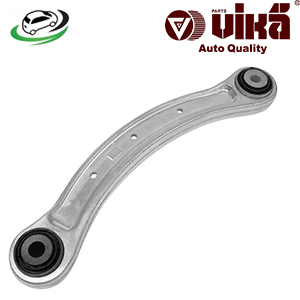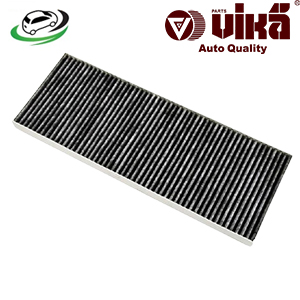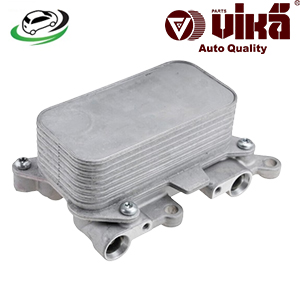-20%
Get Automatic Transmission Oil Cooler VW Touareg 3.0L TDI V6/ Touareg 3.6L V6 A/T V6/ Touareg 3.6L V6 A/T VR6 7P0317037
The automatic transmission oil cooler is an integral component of a vehicle’s cooling system, designed to maintain the optimal operating temperature of the transmission fluid. This helps ensure smooth transmission operation, prevent overheating, and extend the life of the transmission. This overview delves into the function, construction, common issues, maintenance, and benefits of the automatic transmission oil cooler.
Function of the Automatic Transmission Oil Cooler
The primary role of the automatic transmission oil cooler is to regulate the temperature of the transmission fluid. Proper temperature control is essential for the following reasons:
- Preventing Overheating:
- Fluid Temperature Regulation: The oil cooler helps maintain the transmission fluid at an optimal temperature, preventing it from becoming too hot. Overheating can cause transmission fluid to lose its lubricating properties, leading to potential damage and reduced performance.
- Enhancing Transmission Efficiency:
- Smooth Operation: By keeping the transmission fluid within the recommended temperature range, the oil cooler ensures smooth shifting and efficient operation of the transmission.
- Optimal Lubrication: Proper fluid temperature maintains the transmission fluid’s viscosity, ensuring effective lubrication of transmission components.
- Extending Transmission Life:
- Wear Reduction: By preventing excessive heat buildup, the oil cooler helps reduce wear and tear on the transmission, extending its lifespan and improving overall reliability.
- Preventing Fluid Breakdown:
- Chemical Stability: Transmission fluid exposed to high temperatures can break down chemically, leading to loss of performance and potential damage. The oil cooler helps prevent this breakdown by maintaining appropriate fluid temperatures.
Construction of the Automatic Transmission Oil Cooler
The automatic transmission oil cooler is typically constructed from several key components that work together to efficiently cool the transmission fluid:
- Cooling Core:
- Heat Exchanger: The cooling core is the main component of the oil cooler, functioning as a heat exchanger. It consists of a series of tubes or channels through which the transmission fluid flows.
- Material: The core is often made from aluminum or other heat-conductive materials to enhance its ability to dissipate heat.
- Cooling Fins:
- Heat Dissipation: Cooling fins are attached to the cooling core and help increase the surface area for heat dissipation. They facilitate the transfer of heat from the transmission fluid to the surrounding air.
- Design: Fins are typically arranged in a pattern to maximize airflow and cooling efficiency.
- Inlet and Outlet Ports:
- Fluid Flow: The oil cooler has inlet and outlet ports that allow transmission fluid to enter and exit the cooler. These ports are connected to the transmission via hoses or lines.
- Sealing: Proper sealing of these ports is essential to prevent leaks and ensure efficient fluid flow.
- Mounting Brackets:
- Secure Installation: The oil cooler is mounted securely to the vehicle’s radiator or other cooling components using brackets. These brackets ensure that the cooler remains in place and functions effectively.
- Positioning: Proper positioning of the oil cooler is crucial for optimal airflow and cooling performance.
Common Issues and Symptoms
The automatic transmission oil cooler can experience various issues over time, affecting its performance and the transmission’s overall efficiency. Recognizing the symptoms of a failing oil cooler can help address problems early:
- Transmission Overheating:
- Symptom: Frequent overheating of the transmission, indicated by higher-than-normal transmission temperatures or overheating warnings, can be a sign of a malfunctioning oil cooler.
- Cause: A clogged or damaged oil cooler may fail to adequately dissipate heat, leading to increased transmission temperatures.
- Transmission Fluid Leaks:
- Symptom: Leaking transmission fluid, often noticeable around the cooler or on the ground beneath the vehicle, can indicate a problem with the oil cooler or its connections.
- Cause: Damaged seals, cracked hoses, or a defective cooler can lead to fluid leaks.
- Poor Shifting Performance:
- Symptom: Difficulty or roughness in shifting gears, or erratic shifting behavior, can be a sign of overheating or insufficient cooling of the transmission fluid.
- Cause: Elevated transmission fluid temperatures can affect shifting performance and transmission operation.
- Discolored Transmission Fluid:
- Symptom: Transmission fluid that appears burnt or discolored may indicate overheating or breakdown of the fluid.
- Cause: Excessive heat can cause the transmission fluid to degrade, affecting its performance and lubrication properties.
- Engine Temperature Issues:
- Symptom: In some cases, issues with the oil cooler can affect overall engine temperature, as the cooler is often mounted near the radiator and shares cooling resources.
- Cause: A malfunctioning oil cooler can lead to insufficient cooling of the engine and transmission, impacting overall vehicle temperature.
Maintenance and Replacement
Proper maintenance and timely replacement of the automatic transmission oil cooler are essential for ensuring reliable transmission performance and preventing overheating:
- Regular Inspection:
- Visual Checks: Inspect the oil cooler and its connections regularly for signs of leaks, damage, or debris. Check for any visible cracks or deterioration in the cooler or hoses.
- Fluid Levels: Monitor the transmission fluid level and condition, and address any changes in fluid appearance or levels promptly.
- Cleaning:
- Debris Removal: Keep the oil cooler and surrounding areas clean and free of debris that could obstruct airflow. Ensure that the cooling fins are not clogged with dirt or debris.
- Cooler Cleaning: If necessary, clean the oil cooler gently to remove any buildup or contaminants that may affect cooling efficiency.
- Replacement:
- When to Replace: Replace the oil cooler if it is visibly damaged, leaking, or if performance issues persist despite addressing other potential causes. Timely replacement can prevent further transmission damage and overheating.
- Procedure: To replace the oil cooler, disconnect the transmission fluid lines, remove the old cooler, and install the new one. Ensure proper sealing and connection of the fluid lines and check for leaks after installation.
- Professional Help:
- Mechanic Assistance: If you are unsure about diagnosing or replacing the oil cooler yourself, consult a professional mechanic. They can provide accurate diagnosis, ensure proper installation, and check for any related issues.
Benefits of a Well-Maintained Oil Cooler
Maintaining the automatic transmission oil cooler in good condition offers several benefits for vehicle performance and longevity:
- Enhanced Transmission Performance:
- Optimal Operation: A well-functioning oil cooler ensures that the transmission fluid remains within the optimal temperature range, supporting smooth shifting and efficient operation.
- Extended Transmission Life:
- Reduced Wear: By preventing overheating and breakdown of transmission fluid, a properly maintained oil cooler helps reduce wear and tear on the transmission, extending its lifespan.
- Improved Fuel Efficiency:
- Efficient Operation: Efficient transmission operation, supported by proper cooling, can contribute to improved fuel efficiency and overall vehicle performance.
- Preventive Maintenance:
- Avoiding Damage: Regular inspection and timely replacement of the oil cooler can prevent more significant transmission issues, saving on potential repair costs and enhancing overall vehicle reliability.
- Reduced Risk of Breakdown:
- Reliability: Proper cooling helps prevent transmission overheating, reducing the risk of sudden breakdowns and ensuring reliable vehicle operation.
Follow us on Facebook for more parts.





